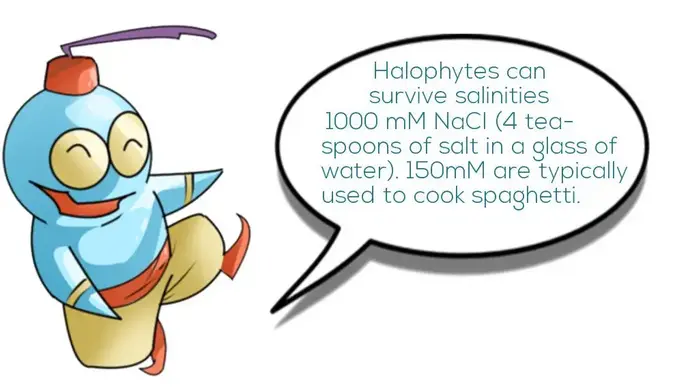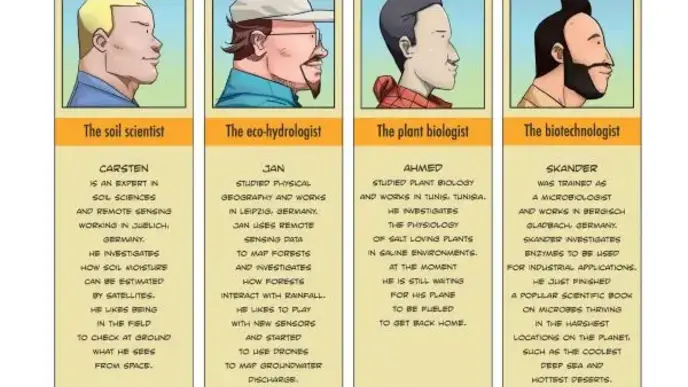1st AGYA Science Comic
1st AGYA Science Comic
The 1st AGYA Science Comic of the AGYA members Skander Elleuche (Biotechnologist) and Jan Friesen (Eco-hydrologist), designed by the illustrators Tyasseta & Siloy, investigates how salt tolerant plants (halophytes) could play a role in the field of sustainable energy production. The science comic entitled ‘The Rise of the Incredible Salty Salicornia Power Plant' presents the results of an interdisciplinary and transnational AGYA research project. The graphic novel is based on the research paper ‘Facing the challenge of sustainable bioenergy production: Could halophytes be part of the solution?’ by AGYA members Ahmed Debez (Plant Biologist), Skander Elleuche (Biotechnologist), Jan Friesen (Eco-hydrologist) and Carsten Montzka (Soil Scientist). The 1st AGYA Science Comic was launched on 26 January 2018. The event reached an international audience of scholars, artists, communication experts as well as representatives of Arab embassies.
Jan Friesen, Skander Elleuche: ‘The Rise of the Incredible Salty Salicornia Power Plant’, January 2018. doi: 10.13140/RG.2.2.18899.48162
The AGYA Science Jinn reveals how it came all about…
Science Jinn – Your Majesty has called for me?!
Sultan – My dearest Science Jinn, what I hold here in my hands is the first volume of our AGYA comic series “The HALOPHYTE tales”.
Science Jinn – Our first science comic episode! Your Majesty knows how much I love science!
Sultan –Do you remember that I asked four outstanding young scholars from the Arab World and Germany to develop a concept of how to generate green energy from halophytes growing in hot, aridic and salty environments?
Science Jinn – Is Your Majesty talking about the review article in which they explain how to identify salt-loving plants and how to determine their growth behavior with regard to their nutrient requirements and soil conditions?!
Sultan – Indeed, they…
Science Jinn – …also mapped for Your Majesty the climate and potential arable lands, where these survival artists do not compete with edible food crops. Wheat and corn are usually not able to grow on salty soils, so we can spare land intended for agriculture. Right?
Sultan – Very good, little Science Jinn. And do you remember what they found out? Can we process plants that are rich in salt for the production of biofuels?
Science Jinn – For sure, Your Majesty. The smart scientists said that such plants must be physically or chemically pretreated to release long starchy sugar chains from the inner cell walls. These chains will be biologically processed to produce small sugar molecules. In a reactor the molecules can be directly converted into biofuels. But there is a problem: Because there is high salt concentration in the reactor, corrosion must be prevented. This also means that the biocatalysts, which are either microbial enzymes or the microbes themselves, must withstand the high salt concentration.
Sultan – Did my four scientists suggest a possible solution in this regard?
Science Jinn – Your Majesty’s four scholars proposed to identify salt-loving microbes that thrive in the saltiest environments on our planet including the Great Salt Lake or the Dead Sea.
Sultan – I am proud of my four scientists who found such a smart solution! Could you explain to our readers, who or what is AGYA again?
Science Jinn – AGYA was established in 2013 as the first bilateral young academy worldwide. The Academy brings together Arab and German scholars from all disciplines to face shared challenges and develop solutions through research cooperation. Your Majesty can find information on all the AGYA members on www.agya.info.
Sultan – Let us now plan for the next AGYA Science Comic.
Release Date
January 2018



